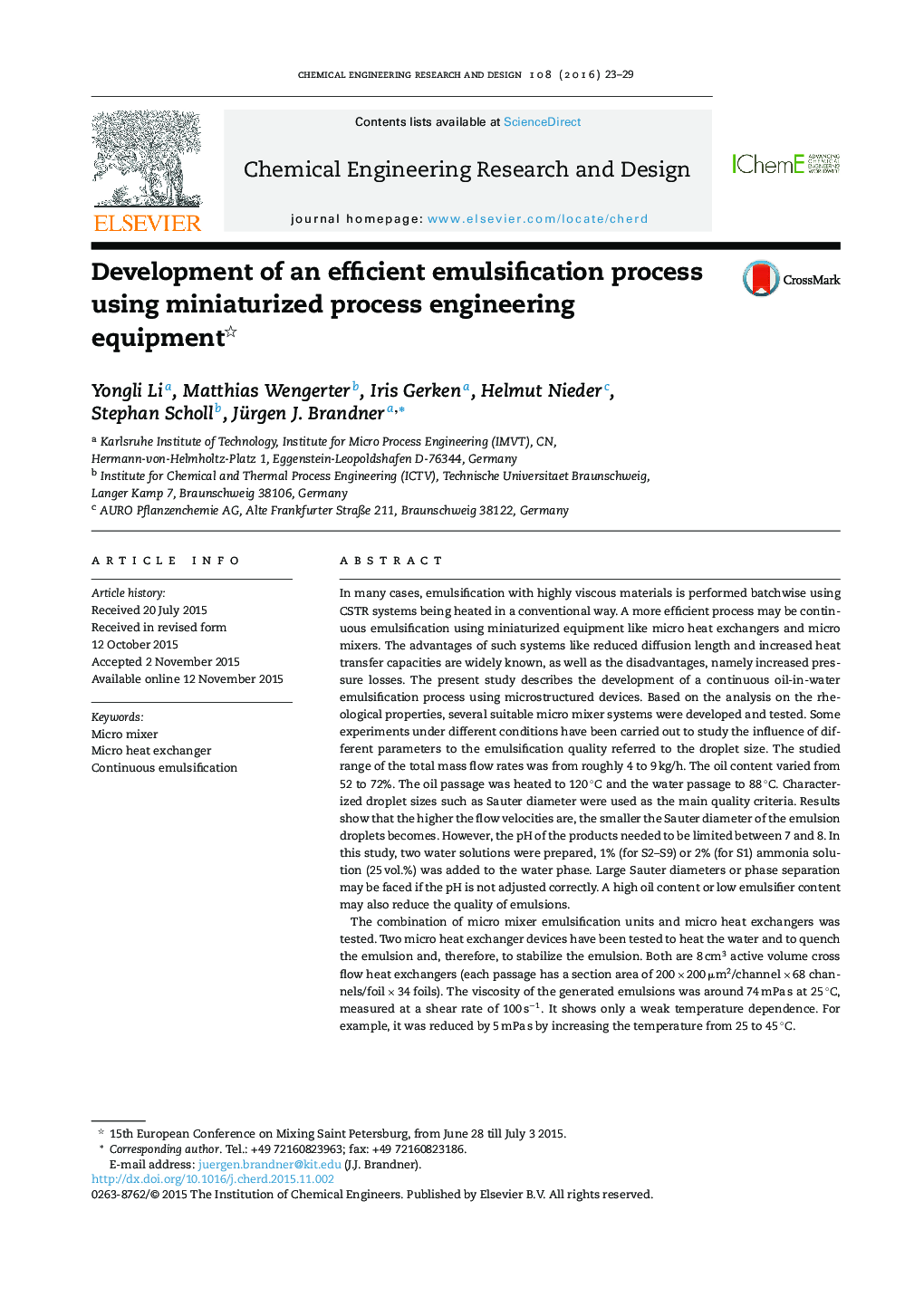| کد مقاله | کد نشریه | سال انتشار | مقاله انگلیسی | نسخه تمام متن |
|---|---|---|---|---|
| 621120 | 1455160 | 2016 | 7 صفحه PDF | دانلود رایگان |
• Transfer of batch emulsification in continuous process.
• Microstructure equipment is used.
• Significant improvement in terms of process performance.
• Improved energy efficiency.
In many cases, emulsification with highly viscous materials is performed batchwise using CSTR systems being heated in a conventional way. A more efficient process may be continuous emulsification using miniaturized equipment like micro heat exchangers and micro mixers. The advantages of such systems like reduced diffusion length and increased heat transfer capacities are widely known, as well as the disadvantages, namely increased pressure losses. The present study describes the development of a continuous oil-in-water emulsification process using microstructured devices. Based on the analysis on the rheological properties, several suitable micro mixer systems were developed and tested. Some experiments under different conditions have been carried out to study the influence of different parameters to the emulsification quality referred to the droplet size. The studied range of the total mass flow rates was from roughly 4 to 9 kg/h. The oil content varied from 52 to 72%. The oil passage was heated to 120 °C and the water passage to 88 °C. Characterized droplet sizes such as Sauter diameter were used as the main quality criteria. Results show that the higher the flow velocities are, the smaller the Sauter diameter of the emulsion droplets becomes. However, the pH of the products needed to be limited between 7 and 8. In this study, two water solutions were prepared, 1% (for S2–S9) or 2% (for S1) ammonia solution (25 vol.%) was added to the water phase. Large Sauter diameters or phase separation may be faced if the pH is not adjusted correctly. A high oil content or low emulsifier content may also reduce the quality of emulsions.The combination of micro mixer emulsification units and micro heat exchangers was tested. Two micro heat exchanger devices have been tested to heat the water and to quench the emulsion and, therefore, to stabilize the emulsion. Both are 8 cm3 active volume cross flow heat exchangers (each passage has a section area of 200 × 200 μm2/channel × 68 channels/foil × 34 foils). The viscosity of the generated emulsions was around 74 mPa s at 25 °C, measured at a shear rate of 100 s−1. It shows only a weak temperature dependence. For example, it was reduced by 5 mPa s by increasing the temperature from 25 to 45 °C.The quenching shows positive effects to the emulsion stability by preventing droplet collapses, which, thus, normally take place at higher temperature. The integration of miniaturized heat exchanger and mixer devices into a system led to a very efficient emulsification unit reducing the total energy consumption of the process considerably.
Journal: Chemical Engineering Research and Design - Volume 108, April 2016, Pages 23–29
